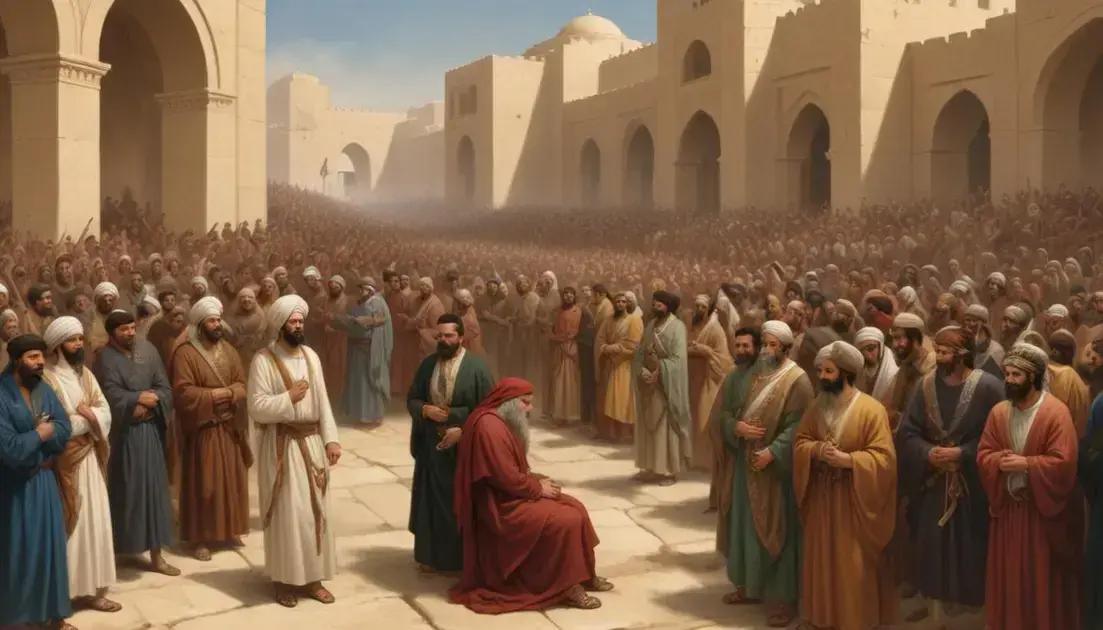
Christians Under the Persians: Tolerance and Repression
The history of Christianity under the Persian Empire is marked by significant persecution, martyrdom, and eventual diaspora. Early Christians faced violent crackdowns and social exclusion, highlighting the challenges they endured. Figures such as Saint Simeon and Bishop James exemplified courage in the face of danger, leading to their martyrdom and inspiring others. As Christians fled persecution, they spread their faith across new regions, contributing to its growth and creating resilient communities. Comparative analysis with other empires shows varied approaches to religious minorities, further illustrating the complex experiences of Christians during this period.
The plight of Christianity under Persian rule is both profound and tragic. It’s a tale of hope amidst oppression. Why did these persecutions occur? Let’s delve in!
Historical Context of Christianity and the Persian Empire
The history of Christianity during the Persian Empire is rich and complex. The Persian Empire was vast and diverse. It stretched across many regions and contained various cultures.
At first, Christians lived quietly under Persian rule. They found some tolerance in early years. However, this would soon change. The Empire saw Christianity as a threat.
As the tides turned, Persian leaders began to view Christians with suspicion. There were many who felt that the Christian faith challenged their own beliefs. This led to increased persecution.
Many Christians faced severe challenges. Some were tortured, while others were forced to flee. Families became separated as a result of these harsh measures. The persecution marked a dark chapter in the history of Christianity.
Despite these adversities, the Christian community showed strength. They held onto their faith even when faced with great danger. The church was a source of hope for many during such difficult times.
This period of oppression didn’t just harm Christians; it also affected the wider society. It sparked a diaspora that spread Christianity beyond Persia’s borders. This had lasting effects on the faith’s growth and spread.
Understanding this historical context helps us appreciate the struggles faced by early Christians. Their journey through these trials is a reminder of faith and resilience.
Patterns of Persecution
Throughout history, the patterns of persecution against Christians in the Persian Empire varied greatly. Early on, Christians experienced periods of relative peace. However, this soon changed as the Empire grew wary of their influence.
One common pattern was the sudden, violent crackdowns. These attacked Christian communities without warning. Families often faced displacement and violence. People lost their homes and loved ones.
Another pattern involved unfair trials. Many Christians were accused of crimes they didn’t commit. The judges often showed bias. These trials led to unjust punishments.
The government spread fear through propaganda. They painted Christians as enemies of the state. This further fueled hostility towards them among the general population.
Additionally, Christians faced social exclusion. They were often denied jobs and basic rights. This made it very hard for them to survive.
Despite the risks, many Christians refused to renounce their faith. Their commitment showed great courage. They became symbols of hope for others.
Tracking these persecution patterns helps us understand the struggles faced by early Christians. It highlights the importance of their faith in difficult times.
Instances of Martyrdom
Instances of martyrdom among Christians in the Persian Empire are both powerful and tragic. Many Christians displayed remarkable courage in the face of persecution. Their faith often led them to stand strong, even when facing death.
One well-known figure is Saint Simeon. He was executed for refusing to renounce his faith. His story inspired many others to remain true to their beliefs.
Another example is the martyrdom of Bishop James. He confronted local leaders about their treatment of Christians. This brave act cost him his life, but it also fueled the community’s resolve.
The tales of these martyrs spread throughout the Empire. Their sacrifices gave hope to those who suffered. Stories of faith led many to embrace Christianity, fueling its growth.
Martyrdom served as a rallying point for Christians. People saw these individuals as heroes. They became symbols of resilience against oppression.
These instances remind us of the commitment many had to their faith. Their lives and deaths left a lasting impact on the Christian community.
The Diaspora and Its Impact
The diaspora of Christians from the Persian Empire had a major impact on the faith itself. When persecution grew too intense, many Christians fled their homes. They sought safety in new lands and communities.
This movement allowed Christianity to spread. As these Christians settled in different regions, they shared their beliefs. Churches began to pop up in areas where they had never existed before.
These new communities offered support. They helped preserve Christian teachings during times of hardship. The sharing of stories and traditions kept the faith alive.
Additionally, the diaspora brought about cultural exchanges. Christians met people from different backgrounds. This sometimes led to new ways of thinking about faith and worship.
The impact was profound, as the diaspora helped shape the beliefs of future generations. It united Christians across different locations, creating a strong sense of community.
Understanding the effects of the diaspora shows how resilient Christianity can be. Even in challenging times, faith can thrive and adapt, finding new roots and taking on new life.
Comparative Analysis with Other Empires
When we look at how the Persian Empire treated Christianity, it’s helpful to compare it with other empires. Many empires also had religious minorities. Their treatment varied a lot.
The Roman Empire, for example, initially accepted many religions. However, it later persecuted Christians harshly. Martyrdom became common as Christians refused to worship Roman gods.
By contrast, the Byzantine Empire, which came after, had a different approach. It embraced Christianity and made it the state religion. This led to more protection for Christians.
The Ottoman Empire also had a unique way of handling minorities. It allowed Christians to practice their faith but imposed specific taxes. This arrangement created a complex relationship between the state and religious groups.
Each empire had its own challenges and responses. For Christians, this meant different experiences in each region. Some found acceptance, while others faced rejection and violence. This shaped the Christian faith in various ways across time.
Understanding these comparisons helps highlight the diversity of experiences for Christians. It shows how political and cultural contexts can influence religious life significantly.
Conclusion
In conclusion, understanding the history of Christianity under the Persian Empire reveals a complex tale of faith, struggle, and resilience. From the patterns of persecution to the bravery of martyrs, these stories highlight the challenges faced by early Christians.
The diaspora not only spread Christianity but also showed the strength of community during tough times. By comparing how different empires treated Christians, we see the varied experiences that shaped their journey.
Ultimately, these insights remind us of the importance of faith and perseverance. The stories of these early Christians continue to inspire people today, encouraging us to hold on to our beliefs even when faced with challenges.


